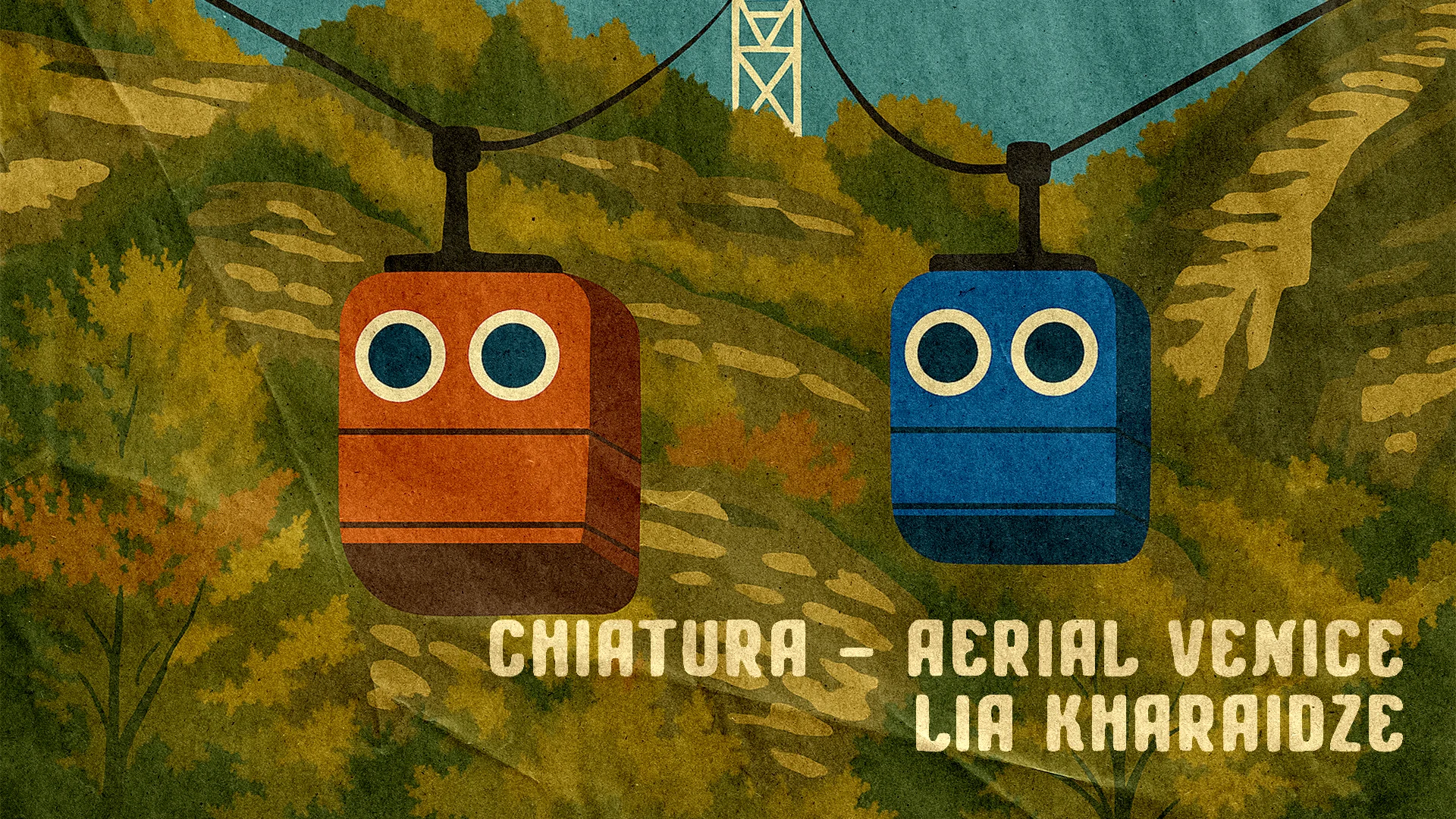Author: Lia Kharaidze
Chiatura is a city with such a unique landscape that it could never be confused with any other. Its special location in the Kvirila Gorge has greatly influenced its development. For example, the abundance of rocks and caves attracted people here as early as the Mesolithic period. Many remains of ancient “Sakhizari” settlements have survived in the area thanks to this location. (There is even a forest nearby called “Nakhiznevi.”)
The geography of the city also explains why, in a place with a population of less than 12,000, there were once as many as 36 cable cars in operation. One foreign visitor, impressed by the network of aerial trams, even called Chiatura the “Aerial Venice.”
The idea of building cable cars in Chiatura was first raised at the end of the 19th century, but it became more widely accepted only in the 1950s. Local engineers developed several freight and passenger cable cars. Because of the challenging terrain, cable cars quickly became a fast and convenient means of transport. In fact, the first aerial cable car in the Soviet Union was built in Chiatura.
1953 the Chiatura-Perevisi passenger cable car, also known as “Twenty-Five,” began operation. It was a heavy-duty, pendulum-type system and is considered the first public cable car in the USSR. Later, another line was added – the “Sashevardno” line – which is now among the top ten cable cars in the world in terms of steepness.
The development of Chiatura’s cable car system is closely connected with the name of engineer Giorgi Pantsulaia (1911–1982). Under his leadership, many aerial cable cars were built across Georgia and the Soviet Union. The Chiatura-Perevisi line is now recognized as a cultural heritage monument. It’s impossible to talk about Chiatura’s cable cars without mentioning Giorgi Pantsulaia.
As early as 1948, he built the first lightweight passenger cable car in Zestaponi, which helped workers cross the Kvirila River. Pantsulaia later led projects in Tbilisi, Tkibuli, Akhaltsikhe, Abastumani, Gurjaani, Kazbegi, Kislovodsk, and even in the Latvian resort of Sigulda. A true expert in his field, he was invited to work not only across the USSR but also in countries like Germany and Switzerland.
A funny story is still remembered in Chiatura: in the mid-20th century, the Naguti area was difficult to reach. During that time, Pantsulaia’s wife, Ksenia Kutateladze, worked as a dentist there. Not long after, a cable car was built connecting Naguti. Locals joked that Giorgi built a personal cable car for his wife.
Passenger cable car stations can be found along the Chiatura -Sachkhere road, in mountain villages and neighborhoods, and throughout the city. The engineering of these stations, along with their diverse architectural styles, is quite eye-catching. You’ll find everything from simple shed-type buildings to original designs from different periods of Soviet architecture.
Some of the most striking elements in Chiatura’s cityscape are the monumental cable car stations in “Stalinist” style, as well as the simple and smooth lines of late Soviet modernism. There are also tall metal towers and raw concrete forms typical of brutalist architecture.
These stations are more than just transportation hubs — they are unique architectural landmarks. The first passenger station was designed by the well-known architect Zakaria Mindorashvili, who also designed notable homes, vacation houses, and industrial buildings in places like Tskaltubo, Zestaponi, and Telavi. Despite the large number of stations, no two are exactly the same.
The well-developed cable car system and the architectural variety of its stations give Chiatura a unique charm – it’s one of the city’s defining features. Within just 250 meters, you can see one of the oldest cable cars in the world, a brutalist structure from the 1970s known as the “Hospital Cable Car,” and even a modern four-way gondola cable car station in the distance.
Chiatura’s industrial heritage and cable cars are not just a means of transport — they are symbols of the city’s identity. They serve as tourist attractions and examples of unique engineering that continue to fascinate visitors today. The rising global interest in industrial culture gives Chiatura a chance to earn its place not only in Georgian tourism but also on the world map of industrial heritage travel.



